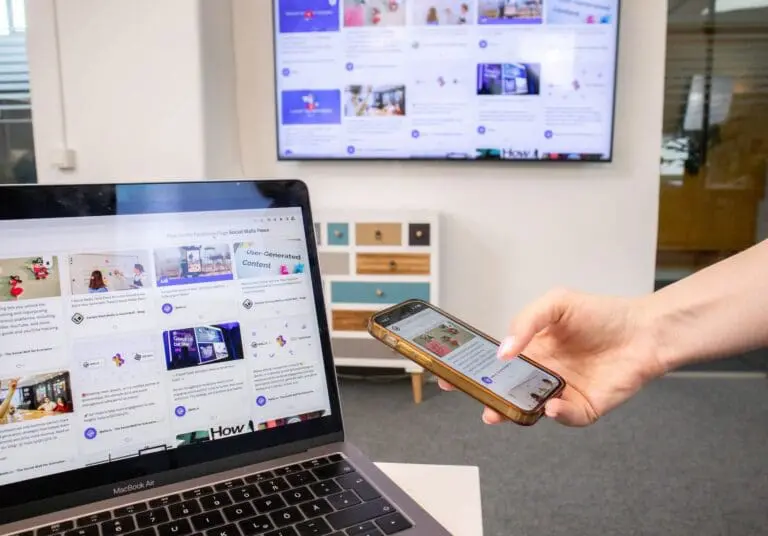Design
How to Use the Fogg Model of Behavior to Improve UX
Humans Aren’t Rational
As the past few years have shown, humans aren’t rational. If they were, web design and online marketing would be relatively simple. You’d promote your product or service based on logical appeals that demonstrate why your mousetrap is better than all the others. Clear-eyed consumers would understand the scientific or statistical reasons why your mousetrap works better, and they’d buy it.

Almost none of the above is how the real world operates.
The fact is, getting a consumer to buy your mousetrap might depend more on the size and color of the fonts you’ve selected for the website than on the foolproof technology that traps rodents in an ingenious way.
Essentially, getting users to click on a call-to-action (buy this! subscribe!) involves getting them to make a decision, which is a behavior contoured by important psychological dimensions that web designers should be familiar with.
Behavior = Motivation x Ability x Prompt
A model of behavior that’s been getting lots of attention is the Fogg Model of Behavior, the Fogg being Stanford professor B.J. Fogg. The Fogg model applies well to the world of web design because it distills a complex set of circumstances into a formula that connects to the many facets of UX. The formula is B=MAP, or Behavior = Motivation x Ability x Prompt.
The Hollywood-pitch version is that behavior occurs when all three elements converge at the same moment. If an expected or desired behavior doesn’t happen, then breaking down the formula will help determine where things went awry.
Each of these elements has a profound impact on how best practices should apply to UX/UI.
Design Can Elicit Behavior
Austin Powers might be the patron saint of web design, most of whom work tirelessly to create content that converts. That means getting users to do something or behave in the way that the designers want. The trouble is, that many users don’t act in predictable or rational ways. User surveys that rely on self-reported assessments aren’t very reliable, and often designers grope to see how UX and UI create an ecosystem that users will respond to.
It’s long been established that design can elicit behavior, in the physical and digital space. The examples abound, from the learning environment at schools leading to better gains to urban planning that encourages more social interaction. If users aren’t “behaving” on your website, maybe using Fogg’s model can help isolate where the issue lies.
Users Want To Follow The Crowd
Users who are highly motivated to be on your site will likely behave the way you want them to–by interacting with the site just as it was designed. But what if a user isn’t highly motivated? What design principles can help in this situation?
One way to fuel motivation is to embrace the idea of “social proof,” the insight that users want to behave the way that everybody else is. In design, social proof is having evidence that other users have found the webpage to be easy to use and navigate, perhaps with reviews or comments.
Every user comes to your website on a different journey, and it’s important to understand not just a demographic profile but also the ways that this user will interact with the product or service you provide. Customer experience maps can be very useful to help ascertain the motivation component of behavior.
Unearth Potential Frustrations or Roadblocks
A user might be very motivated to be on your website, but will your website allow them to do what they want? The ability element speaks more to the very heart of UX. You need to understand where most of your users will be when they access your site and what task they most likely will be doing. You must unearth the potential frustrations or roadblocks they might encounter.
The ability part of Fogg’s model depends on your willingness to go on the journey with some of your users. This is known as “contextual inquiry,” and though it is more difficult data to collect than surveys, you have to see how users actually respond to your design. Self-assessments are notoriously filled with bias and should be taken with a grain of salt.
While you can anticipate what issues might arise through in-house testing, you still need to see what errors will arise when users interact with the site in real time. If the behavior you want isn’t happening, you might need to ensure the Ability element is being met.
Prompts Revisited
Every app on the planet wants to send users notifications to get them to do something, and so the Prompt element of Fogg’s model needs to be handled with care. The last thing you want to do is have users silence you because they consider your prompts to be annoying.
But Fogg’s model calls for prompts, and it’s indisputable that prompts are needed to get an intended behavior. If a user is highly motivated and has the required ability, then prompts or notifications are quite effective. The trick, however, is in allowing users the freedom to select the kinds of prompts they want to receive. If not push notifications, then perhaps daily or weekly emails will suffice. Prompts can also come at various times of the day when you might get a better bang for your buck.
The Fogg Should Roll In
Design based on behavioral psychology isn’t easy, because design itself requires a slew of skills that are hard to define. Adding another layer to the mix seems like overkill, but much of Fogg’s model is already included in the underpinnings of design. Getting users motivated is Design 101, and making sure that users can actually navigate your website is pretty much the entire point of UX. The trickiest element is the Prompt, because of how noisy the world already is.
But the future of design will include AI and VR, along with miracles not yet known. But how the human brain operates, and how most of us perceive risk and reward, will not change.




